#princess Augusta Victoria of Schleswig-Holstein-Sonderburg-Augustenburg
Photo
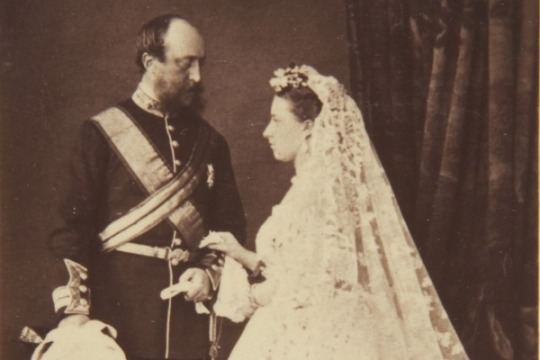
The Marriage of Princess Helena
The marriage of her Royal highness Princess Helena to Prince Christian of Schleswig-Holstein took place on Thursday, in the presence of her Majesty the Queen, their Majesties the King and Queen of the Belgians, the members of the English Royal family and a select congregation of the aristocracy, in the private chapel of Windsor Castle.
Princess Helena Augusta Victoria, fifth child of Queen Victoria and of the lamented Prince Consort, was born on the 25th of May, 1846, and is therefore in her twenty-first year. It has been mentioned in Parliament by one of her Majesty's Ministers, and it may therefore, without impropriety, be recorded here, that the widowed Queen has experienced, in the tender and dutiful attentions of this daughter, one of the greatest sources of consolation during her late bereavement.
Prince Frederick Christian Charles Augustus is a younger son of the late Duke Christian Charles Frederick Augustus of Schleswig-Holstein (who ceded his duchy to Denmark) and brother to Prince Frederick Christian Augustus the eldest son, whose claims to the sovereignty of the duchy, as against, the King of Denmark, were made the pretext, for the late war on the part of the German Powers. Prince Christian, as the younger son is usually called, was born on the 22nd of January, 1831, his mother being Louisa Sophia, Countess Danneskiold-Samsøe, a Danish lady married, in 1828, to the late Duke of Schleswig-Holstein-Sonderburg-Augustenburg, and its lineage is collateral with that of the reigning families of Denmark and Russia. Prince Christian has held commission in the Prussian army. By the express offer of her Majesty, he will henceforth be addressed with the style of Royal Highness.
The small private chapel of Windsor Castle is situated almost in the centre of the Queen's private apartments. Its limited dimensions were, under the direction of the Lord Chamberlain and the Hon. Spencer Ponsonby, made the most of. The seats of pews in the centre were removed, chairs placed on each side, and temporary gallery erected for the commendation of the invited guests. A rich Wilton carpet covered the aisle leading up to the altar.
Soon after eleven o'clock the King and Queen of the Belgians, the Duchess of Cambridge, the Prince and Princess Leiningen, the Duke of Edinburgh, Prince Arthur, and other relatives of the Royal family, were, upon leaving their different apartments conducted to the state drawing-room, which is also called the Zuccarelli Room. From its containing a number of paintings by that artist. The ceiling oof this magnificent room is a richly embellished stucco. In the centre of the cove are elaborately emblazoned shields containing the arms of England and Saxe-Meiningen, the whole being surmounted by the Royal crown, which with other shields scrolls, and wreaths of flowers, complete the decoration. The Prince and Princess of Wales soon afterwards joined this distinguished assemblage where they remained till summoned to the chapel. In the Red Drawingroom, or Rubens' Room, in which the body of George IV lay in state , was assembled the Diplomatic Body; while the general visitors assembled in what is known as the White Drawing-room. Her Majesty's private band played in the Red Drawing-room. About twelve o'clock the Archbishop of Canterbury, the Bishops of London and Winchester, and the Very Rev. the Dean of Windsor arrived.
In the course of the ceremony several pieces of music were performed by the choir of St. George's Chapel, led by Dr. Elvey, and including Messrs. Adams, Dyson, Baraby, Tolley, Bridgewater, Knowles, Mitchell, Hurst, Marriott, Bransome, and Briggs, with the choir of the private chapel.
The following is a list of the bridesmaids whore were in attendance on the Princess: – Lady Caroline Gordon Lennox, Lady Margaret Scott, Lady Albertha Hamilton, Lady Laura Phipps, Lady Alexandrina Murray, Lady Mary Fitzwilliam, Lady Ernestine Edgecombe, and Lady Muriel Campbell. These ladies are the daughters of Dukes, Marquises, or Earls.
Her Majesty – who was dressed in black, relieved with silver trimmings, and who wore a coronet – gave the Princess away. After the ceremony the Princess, who appeared nearly moved to tears, turned round and affectionately embraced her mother. The ceremony terminated exactly at a quarter past one.
The Illustrated London News July 7, 1866
4 notes
·
View notes
Text
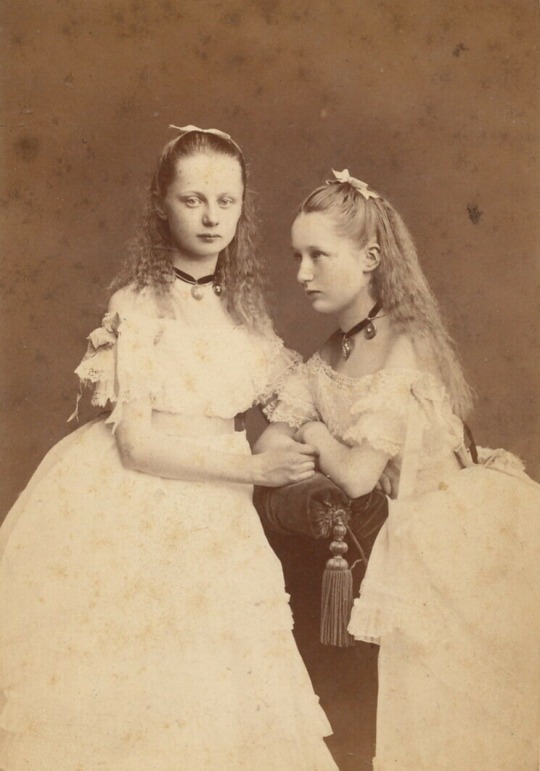
Princesses Karoline Mathilde and Augusta Victoria of Schleswig-Holstein-Sonderburg-Augustenburg, early 1870s.
Queen Victoria's great-niece.
#princess karoline mathilde of schleswig-holstein-sonderburg-augustenburg#princess augusta victoria of schleswig-holstein-sonderburg-augustenburg#schleswig-holstein#schleswig-holstein-sonderburg-augustenburg#german royalty#german royal#early 1870s#1870s
63 notes
·
View notes
Photo
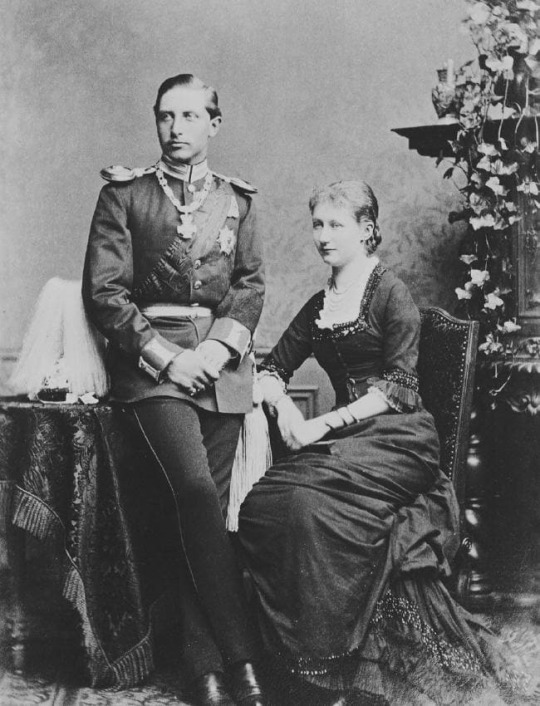
#Prince Wilhelm of Prussia#Princess Augusta Victoria of Schleswig-Holstein-Sonderburg-Augustenburg#Royalty#1880's#victorian#history#german#1880
5 notes
·
View notes
Text
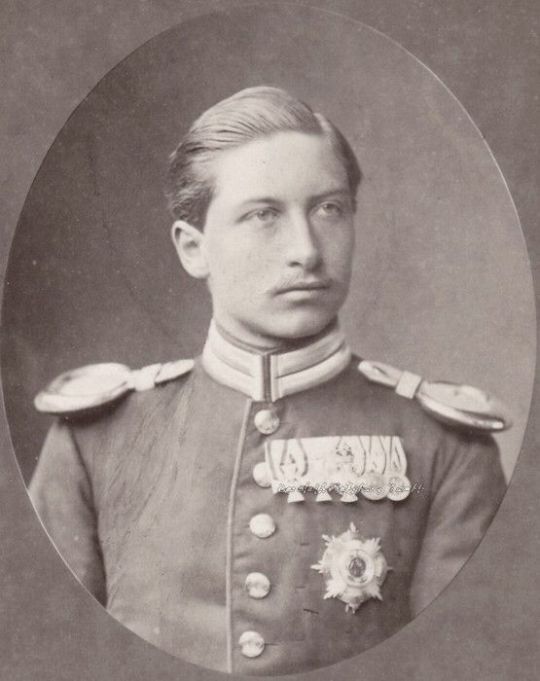

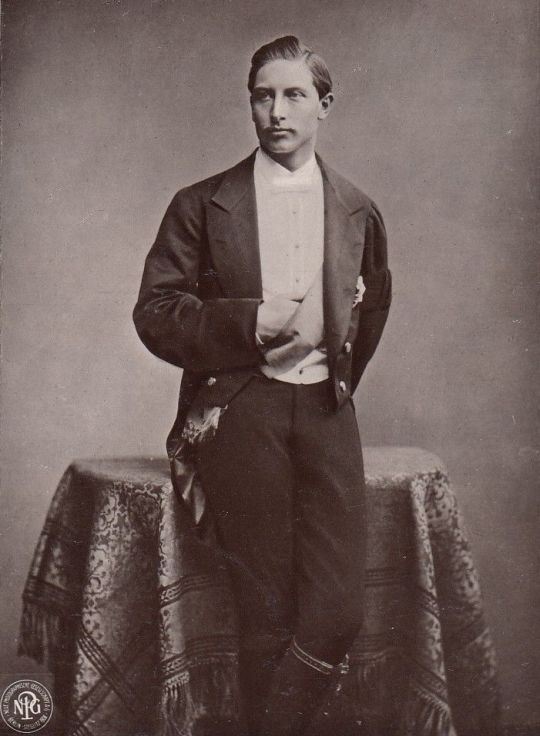

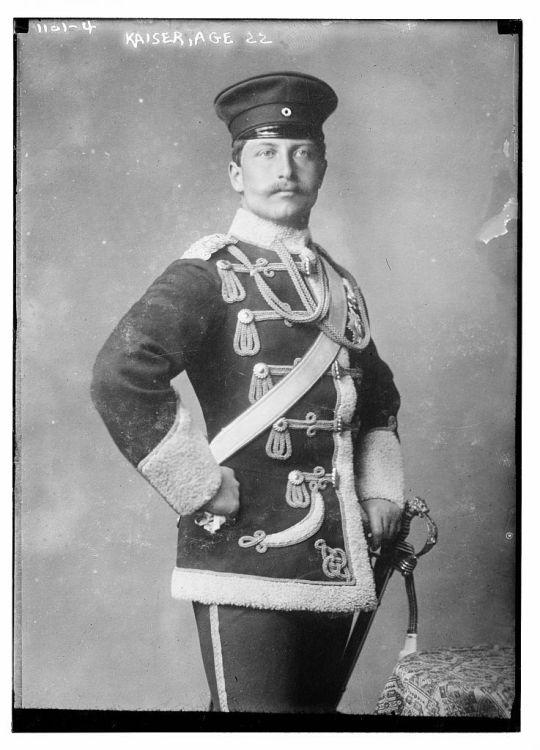



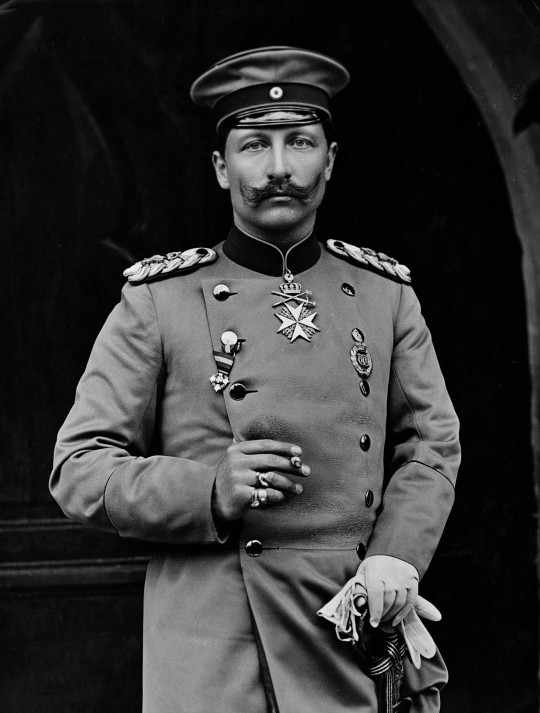
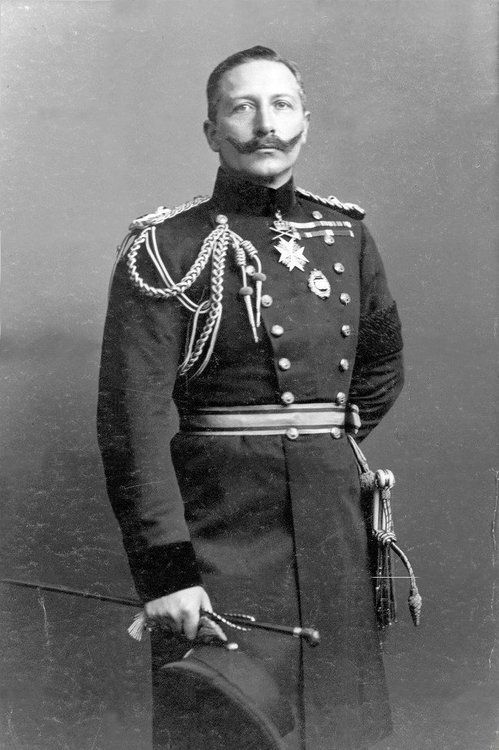
Wilhelm II, German Emperor (1859-1941).
19/20th-century German Emperor and King of Prussia.
.
His reign lasted from 15 June 1888 to 9 November 1918. Despite strengthening Germany’s position as a great power by building a blue-water navy and promoting scientific innovation, his tactless public statements and reckless foreign policy greatly antagonized the international community and ultimately plunged his country into World War I. When the German war effort collapsed after a series of crushing defeats on the Western Front in 1918, he was forced to abdicate, thereby bringing an end to the Hohenzollern dynasty’s three hundred year rule.
.
His grandfather and father both died in 1888, the Year of Three Emperors, making Wilhelm emperor and king. On 20 March 1890, he dismissed the German Empire’s powerful longtime chancellor, Otto von Bismarck.
.
After Bismarck's departure, Wilhelm II assumed direct control over his nation’s policies and embarked on a bellicose "New Course" to cement its status as a respected world power. Subsequently, over the course of his reign, Germany acquired territories in the Far East and became Europe’s largest manufacturer. However, he frequently undermined such progress by making threatening statements towards other countries and voicing xenophobic views without consulting his ministers. Likewise, his regime did much to alienate itself from the world's other Great Powers by initiating a massive naval build-up, challenging French control of Morocco, and building a railway through Baghdad that threatened Britain's dominion in the Persian Gulf. Thus, by the second decade of the 20th century, Germany could rely only on significantly weaker nations such as Austria-Hungary and the declining Ottoman Empire as its allies.
.
Wilhelm II’s turbulent reign ultimately culminated in Germany's guarantee of military support to Austria-Hungary during the crisis of July 1914, one of the direct underlying causes for the First World War. A lax wartime leader, he left virtually all decision-making regarding strategy and organisation of the war effort to the Imperial German Army's Great General Staff. By 29 August 1916, this broad delegation of power resulted in a de facto military dictatorship that dominated national policy for the rest of the conflict. Despite emerging victorious over Russia and achieving significant gains in Western Europe, Germany was forced to relinquish all its conquests after its forces' decisive defeat in November 1918. Upon losing the support of the military and his subjects, Wilhelm abdicated his throne and fled to exile in the Netherlands. He remained there during the German occupation in World War II, and died in 1941.
.
He was married twice : Princess Augusta Victoria of Schleswig-Holstein-Sonderburg-Augustenburg (1881) ; Princess Hermine Reuss of Greiz (1922). He had seven children.
He died of a pulmonary embolus.
[Submission]
#wilhelm ii#german history#germany#late 19th century#19th century#1800s#late 1800s#early 20th century#20th century history#20th century#1900s#1910s#ww1#world war 1#world wars#history crush#historical hottie#history#history hottie#historical crush#history lover#historical figure#history nerd#historical babes#historical#royal history
108 notes
·
View notes
Photo
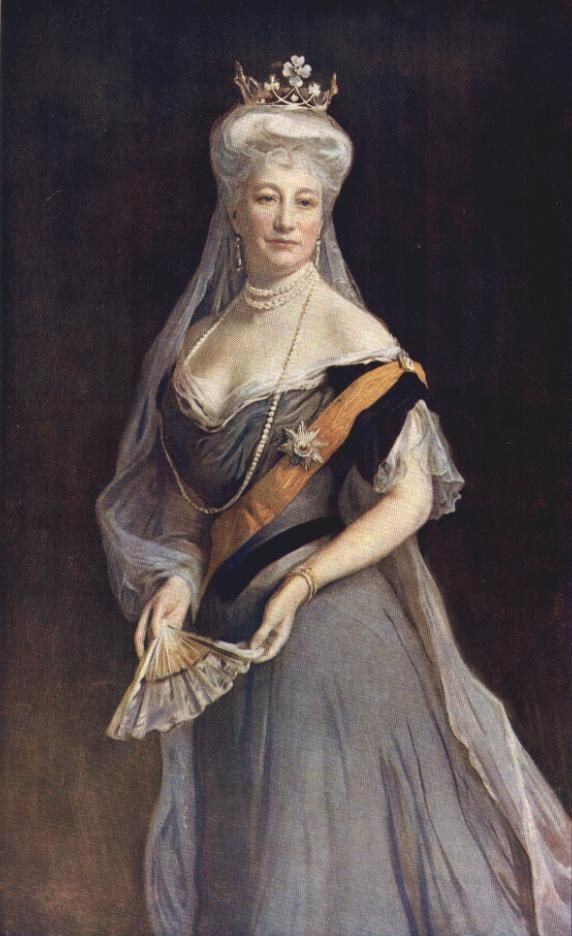
Augusta Victoria, German Empress and Queen of Prussia, born Princess of Schleswig-Holstein-Sonderburg-Augustenburg. Artist
27 notes
·
View notes
Photo









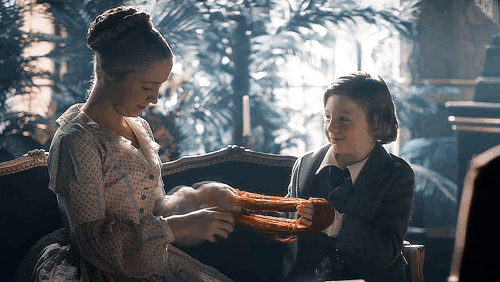
House of Hohenlohe-Langenburg & of Oldenburg: Princess Adelheid of Hohenlohe-Langenburg, Duchess of Schleswig-Holstein
Adelheid was born as the fifth of six children and second of three daughters to Ernst, The Prince of Hohenlohe-Langenburg, and his wife Princess Feodora of Leiningen. Adelheid’s maternal grandmother was Princess Victoria of Saxe-Coburg-Saalfeld, better known as The Duchess of Kent and mother of Queen Victoria.
Her being a niece of the British queen made her an interesting marriage candidate for Napoleon III. after he was denied the hand of Princess Carola of Vasa-Holstein-Gottrop, the daughter of the former crown prince of Sweden at the time. Napoleon hoped to strengthen the bond between Britain and France in marrying Adelheid. The British court maintained a strict silence toward the Hohenlohes during the marriage negotiations, lest the Queen seem either eager for or repulsed by the prospect of Napoléon as a nephew-in-law. Adelheid’s parents interpreted this silence as disapproval from their British relatives and stopped the marriage negotiations to the dismay of 16-year-old Adelheid.
Four years later in 1856, Adelheid married Frederick VIII, Duke of Schleswig-Holstein, and by that became a member of the House of Schleswig-Holstein-Sonderburg-Augustenburg, a branch of the House of Schleswig-Holstein which itself is a branch of the major House of Oldenburg. The House of Oldenburg ruled through its branches in most of Northern Europe. The current Queen of Denmark and The King of Norway belong to it, as well as Prince Philip and his descendants. Adelheid’s and Frederick’s marriage was, according to contemporaries, a happy one and resulted in 7 children. Among them was also the last German Empress Victoria Augusta.
In 1867, Otto von Bismarck annexed the dukedomes as the province Schleswig-Holstein for the Kingdom of Prussia. Adelheid and her family moved to Primkenau (today Przemków). Her husband died in 1880. She survived him by 20 years. The Adelheid Islands in the Russian archipel of Franz Josef Land are named after her.
// Ellen Evans as Princess Heidi in itv’s Victoria
#historic women#women in history#period drama#perioddramaedit#victoria itv#19th century#european history#1800s#victorian era#german nobility#house of oldenburg#princess adelheid of hohenlohe-langenburg#duchess adelheid of schleswig-holstein#women of the house of oldenburg#women of german principalities#german history
106 notes
·
View notes
Text

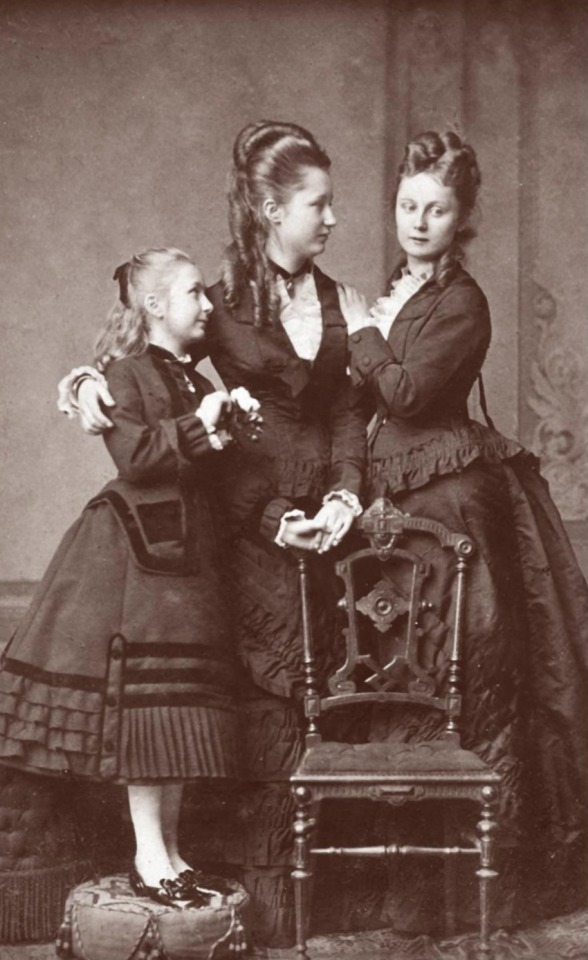
Princesses Louise Sophie, Augusta Victoria and Caroline Mathilde of Schleswig-Holstein-Sonderburg-Augustenburg, mid 1870s.
#princess augusta victoria of schleswig-holstein-sonderburg-augustenburg#princess caroline mathilde of schleswig-holstein-sonderburg-augustenburg#princess louise sophie of schleswig-holstein-sonderburg-augustenburg#schleswig-holstein-sonderburg-augustenburg#schleswig-holstein#german royal#german royalty#1870s#mids 1870s
69 notes
·
View notes
Text

Princess Augusta Victoria of Schleswig-Holstein-Sonderburg-Augustenburg, 1870s.
#german empress augusta victoria#princess augusta victoria of schleswig-holstein-sonderburg-augustenburg#princess augusta victoria of schleswig-holstein#schleswig-holstein#schleswig-holstein-sonderburg-augustenburg#german royalty#german royal#1870s
28 notes
·
View notes
Text
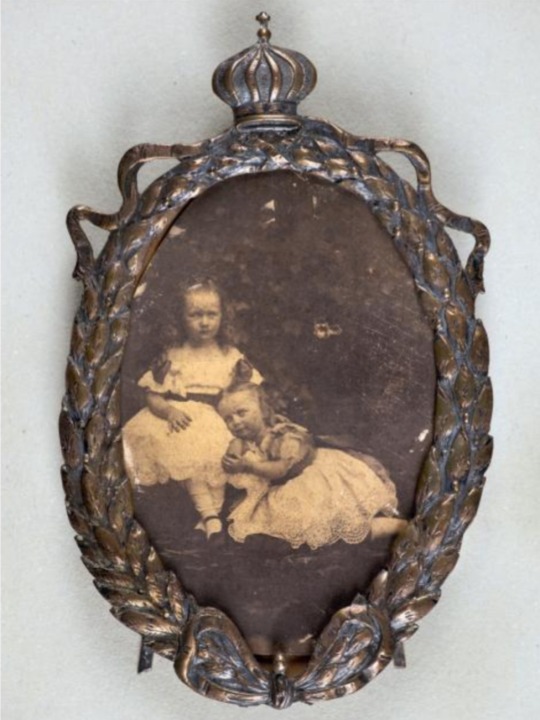
Princesses Augusta Victoria and Caroline Mathilde of Schleswig-Holstein-Sonderburg-Augustenburg,c. 1862.
Great-nieces of Queen Victoria.
#princess augusta victoria of schleswig-holstein-sonderburg-augustenburg#princess caroline mathilde of schleswig-holstein-sonderburg-augustenburg#schleswig-holstein#schleswig-holstein-sonderburg-augustenburg#german royal#german royalty#1860s#1862
29 notes
·
View notes
Text

Princess Augusta Victoria, Princess Karoline Mathilde and Prince Ernst Günther of Schleswig-Holstein-Sonderburg-Augustenburg, c. 1865.
Great-nieces and great-nephew of Queen Victoria.
#princess augusta victoria of schleswig-holstein-sonderburg-augustenburg#princess karoline mathilde of schleswig-holstein-sonderburg-augustenburg#duke ernst gunther of schleswig-holstein-sonderburg-augustenburg#duke ernst gunther of schleswig-holstein#schleswig-holstein-sonderburg-augustenburg#schleswig-holstein#german royalty#german royal#1865#1860s
14 notes
·
View notes
Text
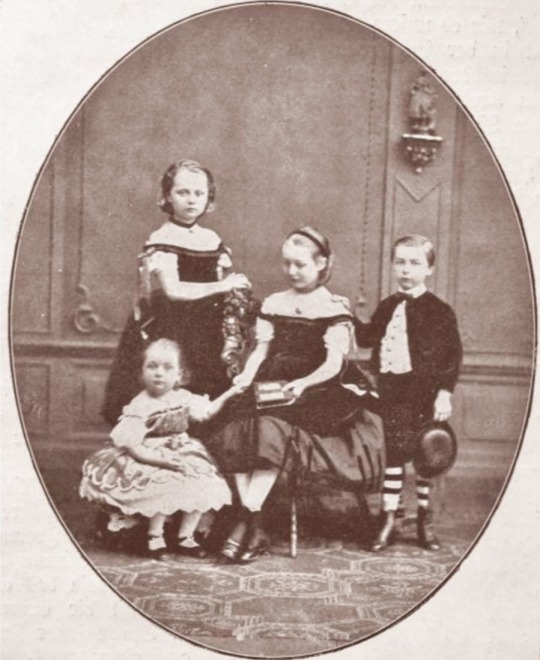
Grandchildren of Queen Victoria's beloved half-sister, Princess Feodora of Leiningen, 1867.
Princesses Augusta Victoria, Caroline Mathilde and Louise Sophie, and Prince Ernst Günther of Schleswig-Holstein-Sonderburg-Augustenburg.
#princess augusta victoria of schleswig-holstein-sonderburg-augustenburg#princess caroline mathilde of schleswig-holstein-sonderburg-augustenburg#princess louise sophie of schleswig-hosltein-sonderburg-augustenburg#duke ernst gunther of schleswig-holstein-sonderburg-augustenburg#schleswig-holstein-sonderburg-augustenburg#schleswig-holstein#german royalty#german royal#1867#1860s
33 notes
·
View notes
Text

Frederick VIII, Duke of Schleswig-Holstein with his three eldest children, Princess Caroline Mathilde, Duke Ernst Günther and Princess Augusta Victoria (future German Empress),1864.
#duke frederick viii of schleswig-holstein#duke frederick viii of schleswig-holstein-sonderburg-augustenburg#princess augusta victoria of schleswig-holstein-sonderburg-augustenburg#princess caroline mathilde of schleswig-holstein-sonderburg-augustenburg#duke ernst gunther of schleswig-holstein-sonderburg-augustenburg#duke ernst gunther of schleswig-holstein#schleswig-holstein#schleswig-holstein-sonderburg-augustenburg#german royal#german royalty#1864#1860s
18 notes
·
View notes
Text
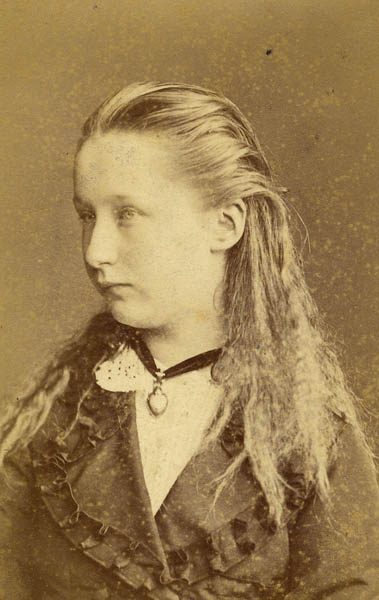
Young Augusta Victoria, German Empress and Queen of Prussia, b. Princess of Schleswig-Holstein-Sonderburg-Augustenburg, early 1870s.
She was also Queen Victoria's great-niece.
#princess augusta victoria of schleswig-holstein-sonderburg-augustenburg#schleswig-holstein-sonderburg-augustenburg#schleswig-holstein#german royal#german royalty#the german empress queen of prussia#german empress augusta victoria#1870s#early 1870s
28 notes
·
View notes
Text

Duchess Adelaide of Schleswig-Holstein and her three eldest children in 1865.
From left to right: Princess Augusta Victoria (future German Empress), Duke Ernst Gunther and Princess Karoline Mathilde.
Source: vk
#duchess adelaide of schleswig-holstein-sonderburg-augustenburg#duchess adelaide of schleswig-holstein#princess augusta victoria of schleswig-holstein-sonderburg-augustenburg#the german empress queen of prussia#duke ernst gunther of schleswig-holstein#princess karoline mathilde of schleswig-holstein-sonderburg-augustenburg#schleswig-holstein#schleswig-holstein-sonderburg-augustenburg#german royal#german royalty#1865#mids 1860s#1860s
26 notes
·
View notes
Text
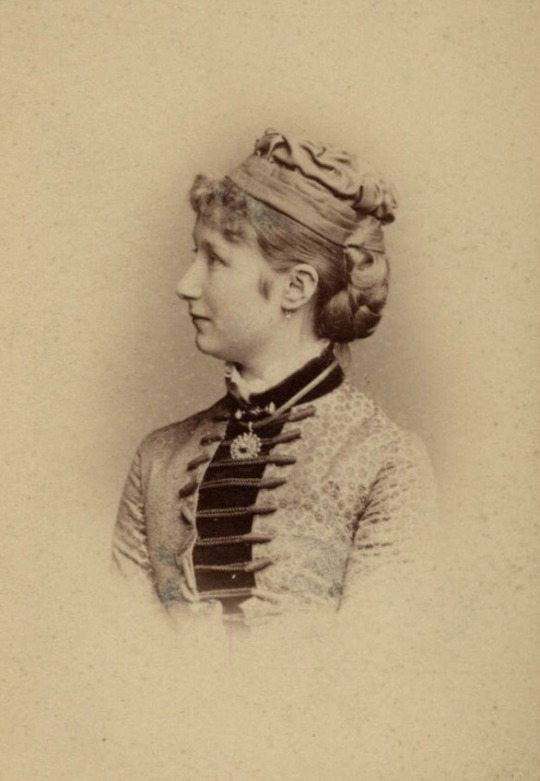
Her Royal Highness Princess Wilhelm of Prussia, later the German Empress, Queen of Prussia. 1880s.
Born on October 22, 1858, she was named Augusta Victoria Friederike Louise Feodora Jenny. Her birthplace was Dolzig Palace, Eastern Prussia (what is Poland today). Her father, Frederick VIII, was heir to the throne of the duchy of Schleswig-Holstein, but the duchy was annexed in 1864 a year after Frederick’s accession and he lost all effective power.
Augusta’s mother was Princess Adelheid of Hohenlohe-Langenburg, the daughter of Princess Feodora of Leiningen, Queen Victoria’s half-sister (Victoria’s mother remarried after the death of her father Prince Edward, the Duke of Kent). Therefore Augusta was a half-cousin to Wilhelm, the grandson of Queen Victoria by her eldest daughter Princess Victoria “Vicky”, who was born three months after Augusta in January 1859.
Augusta’s education was entrusted to a protestant minister, so she never developed a depth of political understanding, but was deeply conservative, which made her a good match for Wilhelm.
When she first met Wilhelm they were only 10 years old. Both would have their hearts broken by other loves before they came together.
As a teenager Augusta fell deeply in love with her cousin Prince Ernst of Saxe-Meiningen, but her parents disapproved of the romance and sent Augusta to England to discourage it. Wilhelm was smitten by his cousin Princess Elisabeth of Hesse, writing her love poetry and visiting her often. In 1878 he proposed to her but she turned him down.
In 1878 Augusta and Wilhelm met again and began to fall in love. Some people opposed a marriage because Augusta was of a lesser royal rank. But the couple found a supporter in German Chancellor Otto von Bismarck, who believed the marriage would resolve the simmering dispute between Prussia and Schleswig-Holstein. They were married on February 27, 1881, in Berlin.
Augusta enjoyed a happy marriage, despite disagreements with her mother-in-law. She doted on Wilhelm and he enjoyed being fussed over. Augusta was one of the only people who could calm Wilhelm when he flew into a rage.
#empress augusta Victoria#the german empress queen of prussia#princess Augusta Victoria of Schleswig-Holstein-Sonderburg-Augustenburg#princess Augusta Victoria of Schleswig-Holstein#Schleswig-Holstein#Schleswig-Holstein-Sonderburg-Augustenburg#prussia#prussian royal family#1880s#german royal#german royalty#german empress augusta victoria
31 notes
·
View notes
Text
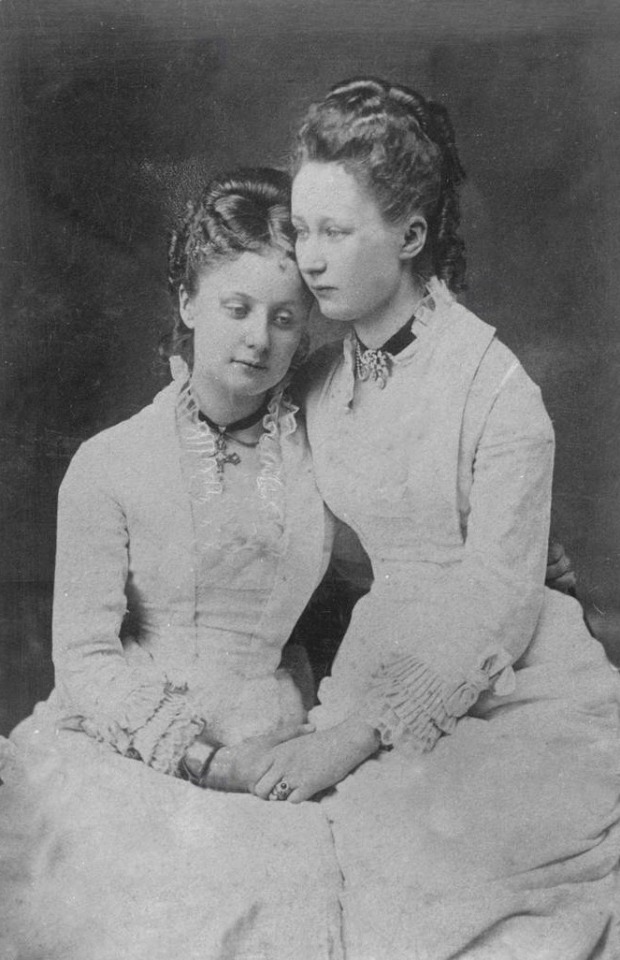
Princess Karoline Mathilde (1860-1832) and future German Empress, then Princess Augusta Victoria of Schleswig-Holstein-Sonderburg-Augustenburg (1858-1921). 1870s
They were great-nieces of Queen Victoria through their maternal grandmother who was Princess Feodora of Leiningen, Victoria's half-sister.
Source: vk
#princess augusta Victoria of Schleswig-Holstein-Sonderburg-Augustenburg#the german empress queen of prussia#princess wilhelm of prussia#princess karoline Mathilde of Schleswig-Holstein-Sonderburg-Augustenburg#Schleswig-Holstein-Sonderburg-Augustenburg#Schleswig-Holstein#german romanticism#german royal#german royalty#prussian royal family#1870s#1870s fashion#princess Karoline Mathilde of schleswig-holstein#princess Augusta Victoria of schleswig-holstein
31 notes
·
View notes